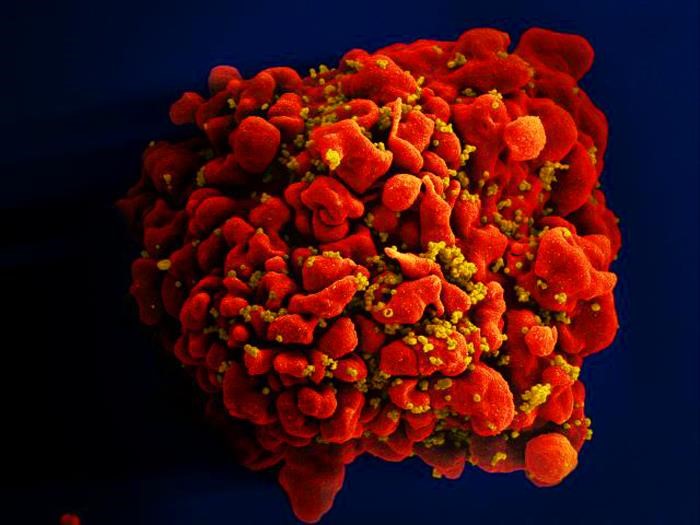Researchers successfully eliminate HIV-1 from cells in vitro
AIDS has been a major global health issue since its emergence in the mid-1900s, and currently, more than 35 million people are infected with HIV-1 with a reported 2 million new cases each year. There is no cure for AIDS, but advances in treatment, such as antiretroviral therapy (ART), have helped to prevent the onset of AIDS and prolong the lives of those infected with HIV-1. ART prevents HIV-1 from replicating but does not eradicate the virus from infected cells, and the risk of reactivation of HIV-1 in infected cells requires lifelong treatment with ART. Researchers at Temple University are one step closer to discovering an eventual cure for AIDS. The research, led by Dr. Kamel Khalili, was published this month in Scientific Reports and details their use of CRISPR/Cas9 gene editing to safely eliminate HIV-1 from infected cells.

Credit: National Institute of Allergy and Infectious Diseases (NIAID)
What is CRISPR/Cas9 gene editing?
CRISPR (Clustered Regularly Interspaced Short Palindromic Repeats) and CRISPR-associated (Cas) genes are utilized by certain bacteria and archaea as a host defense mechanism to eliminate invading genetic material. Three types of CRISPR mechanisms have been identified, but type II has been the most widely studied. This system has been modified to allow for genome editing using two components, a guide RNA that targets a sequence within the genome and a CRISPR-specific endonuclease (Cas9) that cleaves the target DNA. Once the target DNA has been cleaved, the “loose” ends are repaired by the host’s own repair mechanisms. This method has been successfully utilized to create knock-outs in cells and animals as well as activate or repress target genes.
One step closer to a cure for AIDS
Currently, there is no vaccine to prevent HIV-1 infection, nor a treatment that eliminates the virus in infected individuals. Recent approaches to eliminate HIV-1 from cells involved reactivating infected cells to stimulate an immune response, known as “shock and kill”. These methods have not proven successful, so Dr. Khalili and his colleagues utilized an alternative method that focused on targeting HIV-1 proviral DNA, the viral DNA that is integrated into the host genome, through CRISPR/Cas9 gene editing. The use of HIV-1-specific guide RNA and Cas9 endonuclease resulted in the successful elimination of HIV-1 in a T-lymphocytic cell line and ex vivo in CD4+ T cells derived from HIV-1 infected patients while not affecting cell viability or proliferation. Furthermore, cells that were previously infected, but expressed the HIV-1-specific guide RNA and Cas9, were resistant to reinfection.
Dr. Khalili’s findings indicate that CRISPR/Cas9 gene editing is a viable method to not only clear HIV-1 from the host but also to protect cells from infection and prevent viral replication. After decades of research and billions of dollars spent on both research and treatment, these finding represent a promising path forward in identifying a cure for AIDS.
Related products:
CRIPSR reagents: Plant CRISPR/Cas9 Toolbox and Trypanosoma cruzi CRISPR/Cas9 System
HIV reagents: HIV-1 Glycoprotein 160 Antibody, Oral Epithelial HIV Cell Line and more



